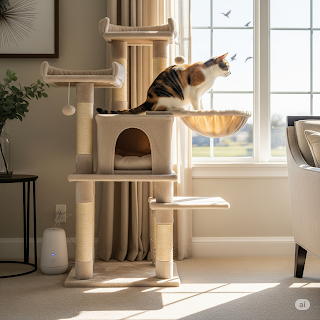Cat Anxiety: Signs, Causes, and Proven Solutions for a Calmer Feline
Watching a cat struggle with anxiety can be heartbreaking for any pet owner. Unlike dogs, cats often express distress in subtle ways that are easy to miss until the behavior becomes severe. From excessive grooming to sudden aggression, anxiety manifests differently in every feline. Recognizing these signs early and addressing their underlying causes can prevent long-term stress and improve your cat’s quality of life.
Recognizing the Silent Signs of Feline Anxiety
Cats are masters at masking discomfort, but careful observation reveals telltale symptoms. A normally social cat that starts hiding under beds or avoiding interaction may be experiencing stress. Overgrooming to the point of bald patches, particularly on the belly or legs, often signals chronic anxiety. Some cats vocalize excessively, while others become unusually clingy or destructive, scratching furniture or urinating outside the litter box. Paying attention to these behavioral shifts is the first step toward helping your pet.
Common Triggers of Anxiety in Cats
Changes in routine or environment frequently unsettle cats. Moving to a new home, introducing a new pet, or even rearranging furniture can trigger stress. Loud noises like thunderstorms or construction work are particularly distressing for noise-sensitive felines. Underlying medical issues, such as hyperthyroidism or arthritis, can also manifest as anxiety. Even subtle factors like dirty litter boxes or competition over food bowls in multi-cat households contribute to chronic stress.
The Science Behind Feline Stress Responses
When cats feel threatened, their bodies activate the same fight-or-flight response seen in humans. Stress hormones like cortisol flood their system, increasing heart rate and alertness. While this reaction helps in short-term danger, prolonged exposure keeps cats in a constant state of hypervigilance. Over time, this weakens their immune system and may lead to conditions like feline idiopathic cystitis. Understanding this biological process underscores why early intervention matters.
Creating a Safe Haven for Anxious Cats
Providing predictable routines helps anxious cats feel secure. Designate quiet spaces with cozy hiding spots, like covered beds or high perches where they can observe their surroundings safely. Synthetic pheromone diffusers mimic natural calming scents cats produce, reducing tension in multi-cat homes or during transitions. Interactive play sessions with feather wands or laser pointers redirect nervous energy into healthy exercise, while food puzzles engage their natural hunting instincts.
When to Seek Professional Help
Persistent anxiety that disrupts your cat’s daily life warrants veterinary attention. Sudden behavioral changes might indicate pain or illness requiring diagnosis. In severe cases, vets may prescribe short-term anti-anxiety medications or recommend behavioral therapy. Certified cat behaviorists can identify triggers and develop tailored desensitization plans, especially for cats with phobias of carriers, car rides, or strangers.
Long-Term Strategies for Emotional Wellbeing
For chronic anxiety, environmental enrichment proves transformative. Rotate toys weekly to prevent boredom, install window perches for birdwatching, and use clicker training to build confidence through positive reinforcement. In multi-cat households, ensure separate resources—litter boxes, food stations, and sleeping areas—to minimize conflict. For older cats with cognitive decline, night lights and consistent routines ease disorientation.
What Not to Do With an Anxious Cat
Avoid punishing anxious behaviors like inappropriate scratching or hiding, as this exacerbates stress. Forcing interaction when your cat retreats erodes trust. Over-the-counter human supplements like melatonin can be dangerous without veterinary guidance. Instead, focus on patience and gradual exposure to stressors, rewarding calm behavior with treats or gentle praise.
Success Stories: Transforming Feline Anxiety
Many cats flourish with simple adjustments. A formerly skittish rescue might blossom after gaining access to vertical spaces, while a noise-phobic cat could learn to associate thunderstorms with playtime and treats. Documenting progress helps identify which strategies work best for your pet’s unique personality.











